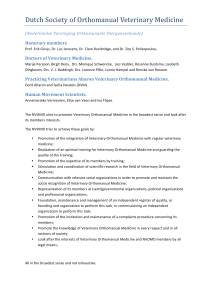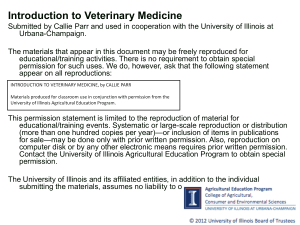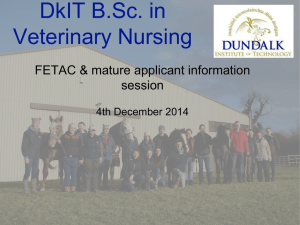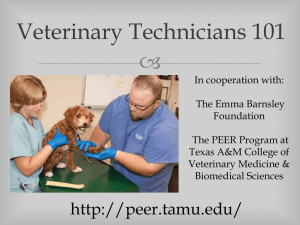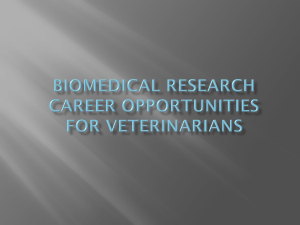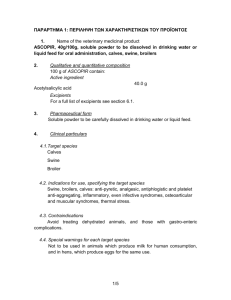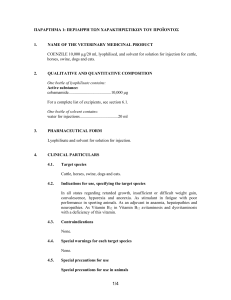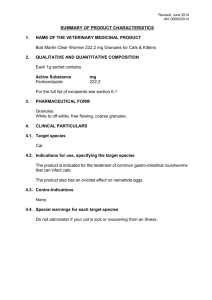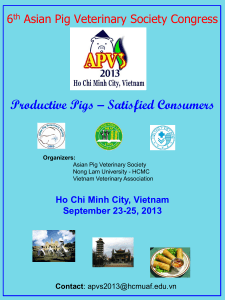Example
advertisement
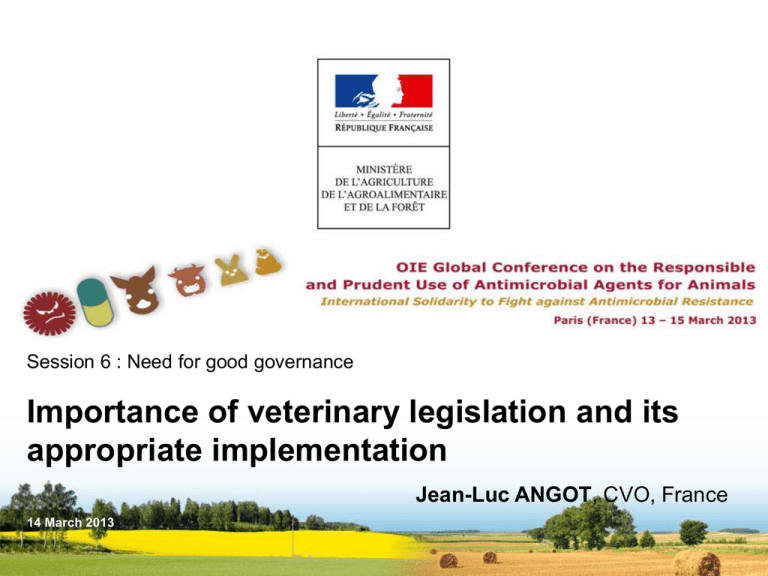
Session 6 : Need for good governance Importance of veterinary legislation and its appropriate implementation Jean-Luc ANGOT, CVO, France 14 March 2013 Background : a global challenge Antibiotic resistance represents a global challenge for public health, animal health and welfare. That has galvanised international organisations including WHO, OIE and FAO. Together, these organisations are closely cooperating as part of the “One Health” concept. Consequence : a global reply is requested International standards have been adopted: - OIE Standards in terrestrial and aquatic animals - OIE list of antimicrobials of veterinary importance - Codex standards and guidelines It is the responsibility of the competent national authorities to implement specific strategies. Public authorities should : - ensure good governance of their veterinary services - provide them with a sufficient control capacity - draw up appropriate legislation and regulations (see slides “Legislation and requirements on antimicrobials should cover”) - help improve practices, working in partnership with the various stakeholders concerned, particularly vets and farmers. In this respect, veterinary statutory bodies play a major role. (see slides “Ecoantibio Plan”) Legislation and requirements on antimicrobials (ATM) should cover (1) : - procedures on marketing authorization : . Assessment of therapeutic efficacy and safety : « authorization must demonstrate that potential hazards are outweighed by the benefits due to efficacy » (source : UE Directive 2001/82/EC) . Assessment of the potential of antimicrobials to select for resistance . Assessment of the impact on the environment (…) Legislation and requirements on ATM should cover (2) - respect of maximum residue limits .The competent authority should established MRLs (in particular for ATM) to ensure that this maximum limit will not be exceeded in the foodstuffs. .National surveillance plans should be set in order to search residues rules on labelling and compulsory mentions on the labelling : - . therapeutic indications, . contra indications and adverse reactions, . dosage for the various species of animal, . route of administration . proposed shelf life . withdrawal periods enough to eliminate health hazards arising from residues (if administered to food-producing animals) Legislation and requirements on ATM should cover (3) - manufacturing and exporting authorization procedures -Example : . the batch-to-batch homogeneity of the products concerned should be demonstrated . good manufacturing practice are established . Specific measures on medicated feedingstuffs should be set - rules and control of advertising - measures on wholesale distribution of veterinary medicinal products Example : distributors of veterinary medicinal products should be authorized by the competent authority and should maintain adequate records Legislation and requirements on ATM should cover (4) - measures to ensure that the retail supply of ATM is conducted only by permitted persons Example : . obligation to submit a veterinary prescription . compulsory mentions on the prescription (date of supply, name of prescriber, name of user, name of product, quantity supplied, therapeutic indications, dosage and administration route, withdrawal periods….) - requirements on pharmacovigilance in order to collect information useful in the surveillance of veterinary medicinal products, with particular reference to adverse reactions in animals and in human beings related to the use of veterinary medicinal products - responsibilities of food-animal producers compliance with the prescription, storage condition of the ATM, records…. For an appropriate implementation of the legislation and to improve practices A national plan is a good method to reach this objective Example : French national plan to reduce antibiotic use in veterinary medecine This plan mobilises - public authorities - vets - farmers in various livestock sectors - scientists and risk assessors - pharmacists - the pharmaceutical industry - the general public, including all animal owners Conclusion Antimicrobial resistance : one of the most important medical challenges of the 21st century and a major health issue for the livestock production industry and worldwide food security. Antimicrobial agents are vital medicines for human and animal health. It is the authorities' responsibility to protect this key asset. International cooperation is mandatory. Authorities must also provide good governance and adequate inspection resources for their veterinary services, draft appropriate laws and regulations, and work with the various stakeholders concerned to change their practices. Thanks for your attention

